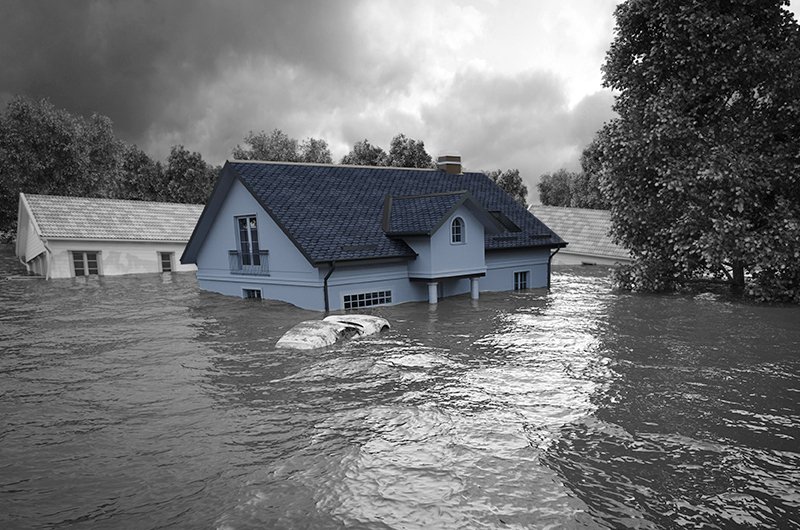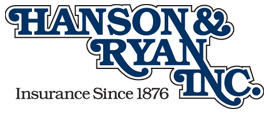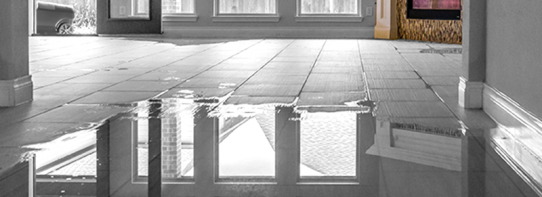Flood Insurance 101

Flood insurance has many misconceptions, so we are here to try to clear up all of them. Below are some of the common questions that we come across. We will go over everything from the different types of policies available to items that will affect your premium. There are many policies you can purchase online but this is one you will want to work with a flood expert who will analyze your situation correctly and put the proper policy in place.
What is the Difference Between a FEMA and Private Flood Insurance Policy?
The National Flood Insurance Program (NFIP). NFIP that was created back in the 1960’s when basically every private market carrier pulled out of writing flood coverage. There was just too much exposure and they were not making money. So the government, Federal Emergency Management Agency (FEMA), stepped in and created a solution, the National Flood Insurance Program (NFIP). NFIP puts in place standardized rates and regulations so no matter what company you obtain coverage the pricing and coverage is the same across the board.
The Private Flood Insurance markets have started to make their way back into the game a few years ago. Since it is not controlled by the government, they can follow their own rules, to a certain extent. They can provide higher limits, lower deductibles, broader coverage including contents in your basement and additional living expenses if you were displaced. Most also waive the 30-day waiting period and tend to cost less than a NFIP policy.
What Does a Flood Insurance Policy Cover?
Building
- Electrical and plumbing systems
- Furnaces and water heaters
- Refrigerators, cooking stoves, and built-in appliances like dishwashers
- Permanently installed carpeting
- Permanently installed cabinets, paneling, and bookcases
- Window blinds
- Foundation walls, anchorage systems, and staircases.
- Detached garages
- Fuel tanks, well water tanks and pumps, and solar energy equipment
Contents
- Personal belongings such as clothing, furniture, and electronic equipment
- Curtains
- Washer and dryer
- Portable and window air conditioners
- Microwave oven
- Carpets not included in building coverage (e.g., carpet installed over wood floors)
- Valuable items such as original artwork and furs (up to $2,500)
Not Covered Under NFIP But May Be Covered Under a Private Flood Policy
- Temporary housing and additional living expenses incurred while the building is being repaired or is unable to be occupied
- Property outside of an insured building. For example, landscaping, wells, septic systems, decks and patios, fences, seawalls, hot tubs, and swimming pools
- Financial losses caused by business interruption
- Currency, precious metals, stock certificates and other valuable papers
- Personal property kept in basements
Not Covered Under Any Flood Policy
- Cars, which are usually covered under the vehicles auto policy
What Do I Need to Provide to Obtain a Quote?
Information You Will Need To Produce
As with any insurance in order to provide a quote your agent is going to need some information from you. Some of which includes:
- Insured’s name
- Property address
- Type of property (commercial or residential)
- Interest in property (owner or tenant)
- Type of coverage desired (building, contents, or both). If you are unsure your agent will make recommendations.
- Elevation type, if applicable (posts, piers, elevated crawlspace, etc.)
- Number flood vents or other flood prevention measures, if applicable
- Mortgagee clause, if applicable
Information Your Agent Will Produce
There is additional information needed that your insurance agent will obtain through their resources and confirm accuracy with you. This includes:
- Building’s replacement cost. This is not what you paid for property but what it would cost to completely rebuild the building.
- Flood zone
- Year built
- Foundation type
Elevation Certificate
If your building was constructed “Post-FIRM”, after the publication of the Flood Insurance Rate Map, then you will also be required to provide an Elevation Certificate (EC). EC may not be required in the private flood market or if the structure was built “Pre-FIRM”. The certificate must be produced by a licensed surveyor, which usually runs a few hundred dollars. The EC is used to provide structural elevation information to make sure your property is in compliance.
30-Day Waiting Period
Unlike a normal property insurance policy, a flood policy also comes with a 30-day waiting period. So, after you make payment you will have to wait 30 days for coverage going into effect. Unless is it required for a loan closing then the waiting period would be waived. It may also be waived if you obtain a private flood option that allows it. The carrier puts this stipulation in place, so property owners do not only obtain flood insurance when a flood risk is announced.
What Affects Pricing on a Flood Policy?
Flood Zone
When you are purchasing a property one major question that will not only affect your decision on buying the property and comes with a major price difference… is it in a flood zone? Flood Insurance Rate Map identifies 5 standard Flood Zones outlines below. To see flood maps for a specific address, visit FEMA’s Flood Map Service Center.
- High Risk = A and E
A and E are considered Special Flood Hazard Area (SFHA), which is defined as having 1% chance of flooding annually and probably will flood within 100-year period. There are variations of these zones (ex. AH, AR, VE, etc.) but if it starts with A or E your property is in a flood zone.
- Moderate Risk = B and X
These moderate zones are defined as having a 0.2% chance of flooding annually and probably will flood within a 500-year period.
- Low Risk = C and X
X can be low or moderate risk depending on if it is shaded on the flood map. These zones have a less than 0.2% chance of flooding but that doesn’t mean they won’t flood. Please reference I’m Not in A Flood Zone. Why Do I Need Flood Insurance?
Community Rating System
Formed in 1990, the Community Rating System, is a voluntary program for communities who implement superior flood prevention, reduction and management plans. If your property falls in one of these communities, they will be given a Class rating, which will make you eligible for discounts.
Location of Your Structure
An Elevation Certificate (EC) completed by a licensed surveyor will detail the design of the structure in terms of elevation. While this can be costly at first (a few hundred dollars), it has the potential to save you money in the long run by reducing your yearly premium. However, keep in mind that not all ECs have favorable outcomes as they depend upon the construction of the property itself.
Design of Your Structure
There are a few things you can do to your structure to provide additional discounts on your flood policy.
- Elevate your structure or utilities. After SuperStorm Sandy hit the Jersey Shore, we saw a ton of homes raised up on tilts. While this can be very costly upfront it does add a layer of protection while also reducing your flood costs. Your rate will be based upon the calculation of the lowest point vs. the base flood elevation, “BFE” on your Elevation Certificate.
- Fill your basement. Again, your rate is based on your lowest point, which includes your basement. If you do not have a basement then they will use your 1st floor, which in the end will cost less.
- Install flood vents/openings. Another option is to install features on your home that will mitigate flood damage. Installing French drains or vent that will direct water away from your home, which will reduce damage and your premium.
Type of Property
There are 3 main types of properties when dealing with flood insurance.
- Primary Residence
- Secondary Residence
- Commercial property
Each of these properties come with a different rate and automatic increases each year if you have a FEMA policy. In recent years the government has been applying the most drastic increases to secondary and commercial properties. They are trying to be most conservative with the increases applied to primary residence. Although with FEMA being in such large debt it is almost guaranteed that you will see some type of increase each year with a FEMA plan.
Limits and Deductibles
Normally when you insure your property you make sure the building limits are enough to cover completely rebuilding the structure. For your contents you would estimate the cost to replace every item or use a percentage of the building limit. When you purchase a FEMA flood policy there are certain caps for residential and commercial property, outlined below. Adjusting your building/content limits will affect your premium, sometimes drastically. Using a higher deductible would also reduce your premium. Deductibles can range anywhere from $1,000-$10,000 depending on the risk and the insurer. It’s important to remember when adjusting your coverage and deductible limits what makes sense for your situation, what can you comfortably cover in case of a loss to make you whole again.
FEMA Policy Maximums:
- Residential Properties:
- $250,000 for the building
- $100,000 for the contents
- Commercial Properties:
- $500,000 for the building
- $500,000 for the contents.
Why Was My Home Just Remapped into a Flood Zone?
National Flood Insurance Program (NFIP) & Federal Emergency Management Agency (FEMA) are continually working to identify and/or reassess areas with flood risk. Properties are susceptible to change over time due to construction and/or weather patterns. If a location exposure has changed, they will revise Flood Insurance Rate Map (FIRM). Properties can move from High Risk or Special Flood Hazard Areas (SFHA), Flood Zones A and V to Low Risk or Non-Special Flood Hazard Areas (non-SFHA), Flood Zones B, C, or X and vice versa.
If your area was reclassified into a flood zone you may have been contacted by your mortgage company forcing to put flood coverage in place right away. Don’t stress, we are here to evaluate your property and provide the most competitive flood coverage that fits your particular needs. If you would like to view flood maps in your area visit https://msc.fema.gov/portal/home.
I’m Not in A Flood Zone. Why Do I Need Flood Insurance?
Floods are the nation’s most common and costly natural disaster and cause millions of dollars in damage every year. The average cost to repair flood damage is $40,000.
FEMA has estimated that approximately 30% of flood insurance claims are made on properties that are not in flood zones. Flooding can happen anywhere at any time. You don’t need to be near a river to experience a flood. Poor drainage systems, summer storms, melting snow, neighborhood construction, and broken water mains can all result in flooding.
Your standard homeowners or property policy does not cover flooding. Flood is defined as an excess of water on land that is normally dry, affecting two or more acres of land or two or more properties. Some homeowners or standard property policies will include a water/sewer back-up endorsement but if that was caused by this definition of a flood then your claim will be declined.
Federal disaster assistance is only made available when there is a Presidential disaster declaration, and most flood events do not result in a declaration. Disaster assistance typically comes in the form of loans that must be repaid – with interest!
It is affordable. FEMA offers coverage for certain properties located in non-SFHAs on a “Preferred Risk Policy” which can cost as little as $325 per year.
Risk Management – What To Do Before, During & After A Flood
How Do I Prepare for a Flood?
There are some basic steps you can take to prepare your property for possibly flooding.
- Elevate utilities such as water heaters, furnaces, and other appliances
- Remove personal contents from the basement wherever possible. Content coverage in basements can be very limited depending on your policy.
- Make sure sump pump is working and install a generator, in case of a power outage
- Install a water detector
- Waterproof the basement, install French drains, vents
- Clean gutters and downspouts regularly
Stay informed of possible flooding in your area. Watch the news, check your alarms, sign up to receive texts/emails of water in your area. USGS’s WaterAlert system will provide up to date information of water in your area.
Purchase a flood insurance policy from a professional insurance agent to make sure your property is covered properly. Keep your insurance agent number available, 973-256-6000. Flood Basics
Help My Property Is Flooding!
With any disaster situation always remember the most important thing is your safety. Property is replaceable, people are not. There is not much you should do during an actual flood. You cannot predict patterns and staying in an area that is flooding can put yourself or a rescuer in danger.
My House Just Flooded. Now What?
- After you are safe contact your insurance agent. Your agent will take down the details of what happened and your best contact information. They will report the claim into your carrier on your behalf.
- You will be contacted by an Insurance Adjuster usually within 24 hours, depending on the severity of the losses in your area. The adjuster will review the claim detail with you and set up an appointment to come out and inspect the property. *Note sometimes you will be assigned 2 different adjusters, a desk adjuster (someone who reviews the policy coverages, inspection and other claim details) and a field adjuster (someone who comes out to the property for inspection). Your insurance carrier may use outside adjusting firms for their claim analysis.
- Prior to the adjuster arriving we suggest you take pictures and as much inventory of damage as possible.
- It is your responsibility to try and protect your property as much as possible. If there is something you can do to prevent any further damage from happening, please do so. When possible, try to not get rid of anything until an adjuster has inspected.
- After your property is inspected the adjust will provide you with a Proof of Loss. This will list all your damaged items and estimated cost to repair and replace. You are able to negotiate items on these lists even after signing.
- Once you agree and sign the Proof of Loss the insurance carrier will cut a check for the loss. If you have a mortgage company on the policy the check will also be made out to them. You will have to have your mortgage company endorse the check prior to cashing.
- Time to replace and rebuild. Keep invoices, receipts, and document along the way.
Flood Insurance can be confusing that is why it is important to choose a reliable agent to help walk you through the process. They should be there to answer any questions and hold your hand in the unfortunate event of a claim. Please contact Hanson & Ryan if you have questions or would like a flood quote on your home or business.




